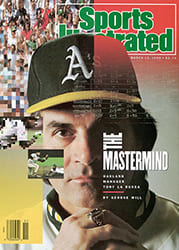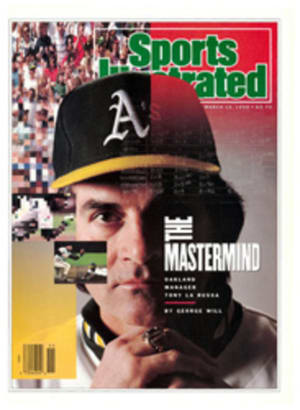
A BAD CASE OF THE BLAHS
There was a stirring 3,000-meter race in the USA/Mobil Indoor Track & Field Championships at Madison Square Garden two weeks ago. "There was no cat-and-mousing," said Lynn Jennings not long after she had kicked away from PattiSue Plumer and Vicki Huber to win the race in 8:40.45, a U.S. women's indoor record. Plumer and Huber also eclipsed Lesley Welch Lehane's three-year-old mark of 8:44.68. The three runners' times, on the Garden's scarred old boards, were astonishing. "So," asked Jennings, "was it exciting to watch?"
It certainly was, which made it all the more a shame that so few people were on hand. Attendance at the 15,700-seat Garden was announced as 11,849, but judging from the vast stretches of empty seats, a lot of ticket holders stayed home. "Something is wrong with our sport," Marcus O'Sullivan said after winning the Wanamaker Mile at the Panasonic Millrose Games on Feb. 2. Indeed, it has been a troubling winter for anyone who loves track and field.
Last year the Millrose failed to sell out for the first time since 1972. There were empty seats again this year. Said meet director Howard Schmertz, "Five years ago we could have sold 30,000." Last week Panasonic announced that it would not renew its sponsorship of the Millrose. But at least it was held this year. Seven of the 14 events that formed the Mobil Grand Prix circuit four years ago—in Albuquerque, San Diego, Chicago, Toronto, Ottawa, Dallas and Sherbrooke, Que.—were not. Though some of these meets may be revived, the outlook for indoor track in North America, says Track & Field News, is "unrelentingly bleak".
What has gone wrong? "Part of it is drugs," says Schmertz. One legacy of Ben Johnson's being stripped of his 1988 Olympic 100-meter gold medal is the pervasive assumption that every breathtaking performance is drug-assisted. I recall the exhilaration I felt as a college middle-distance runner in 1975 upon learning that John Walker had run a 3:49.4 mile. Now when I hear about a record, my response is more tempered. Cynicism is a painful substitute for awe.
With Johnson's suspension, track also lost a fabulous draw. No one in the current crop of athletes has seized the public's imagination the way he or, say, the young Jim Ryun did. Florence Griffith-Joyner did briefly, but she retired five months after the 1988 Olympic Games. Carl Lewis made only one appearance on the indoor circuit this year—to sing the national anthem at the Vitalis/Meadowlands Invitational on Feb. 9. Mary Slaney, who is 31, and Eamonn Coghlan, 37, were recently voted by track writers as the sport's top indoor performers of the last decade. Slaney's best indoor performance, a world record at 1,500 meters (4:00.8), came in '80, and Coghlan's, a world record in the mile (3:49.78), in '83. Track needs some new faces.
It also needs athletes with competitive fire. At the heart of the sport he not only record times, but also great rivalries. Unfortunately, many top athletes spend more time avoiding each other than they do racing. Last year Abdi Bile and Said Aouita, who were ranked first and second, respectively, in the world in the 1,500, did not race each other even once.
With stars busy dodging one another, televised track meets have lost their luster. Indoor track's decline has occurred even though, because of the boom in cable, there are actually more meets on TV now than in the 1960s and '70s. By not offering the best fields, track blew its chance to use cable as a promotional tool—unlike college basketball, which televises exciting matchups with national appeal seven days a week.
If track is to stage a comeback, it must make the sport more accessible to new fans, for whom indoor track meets can seem cumbersome and confusing, especially when there are three or four events going on at once. Some solutions: Do a better job of focusing the fans' attention by trimming meets to two hours. Clocks should be visible to everyone in the arena, and they should be in sync with the phototimer—especially when record bonuses are on the line, as they were at the Meadowlands meet.
Credit the folks at the Meadowlands with trying to drum up some new interest. The Meadowlands promoters seem to have grasped that track and field desperately needs some creative marketing, even a little show biz. This year's meet included, along with ceremonies honoring famous New Jersey Olympians, a relay for former Jets and Giants, and a Bill Cosby Celebrity Relay, featuring not only Cosby but also, among others, U.S. Senator Alan Cranston and boxer Mark Breland.
So what if Cosby's stomach crossed the finish line well before the rest of him did. It was clear from the exodus of fans after his race that he at least was putting people in the seats. Maybe a little track and field rubbed off on them, too.
PHOTO
F. CARTER SMITH

